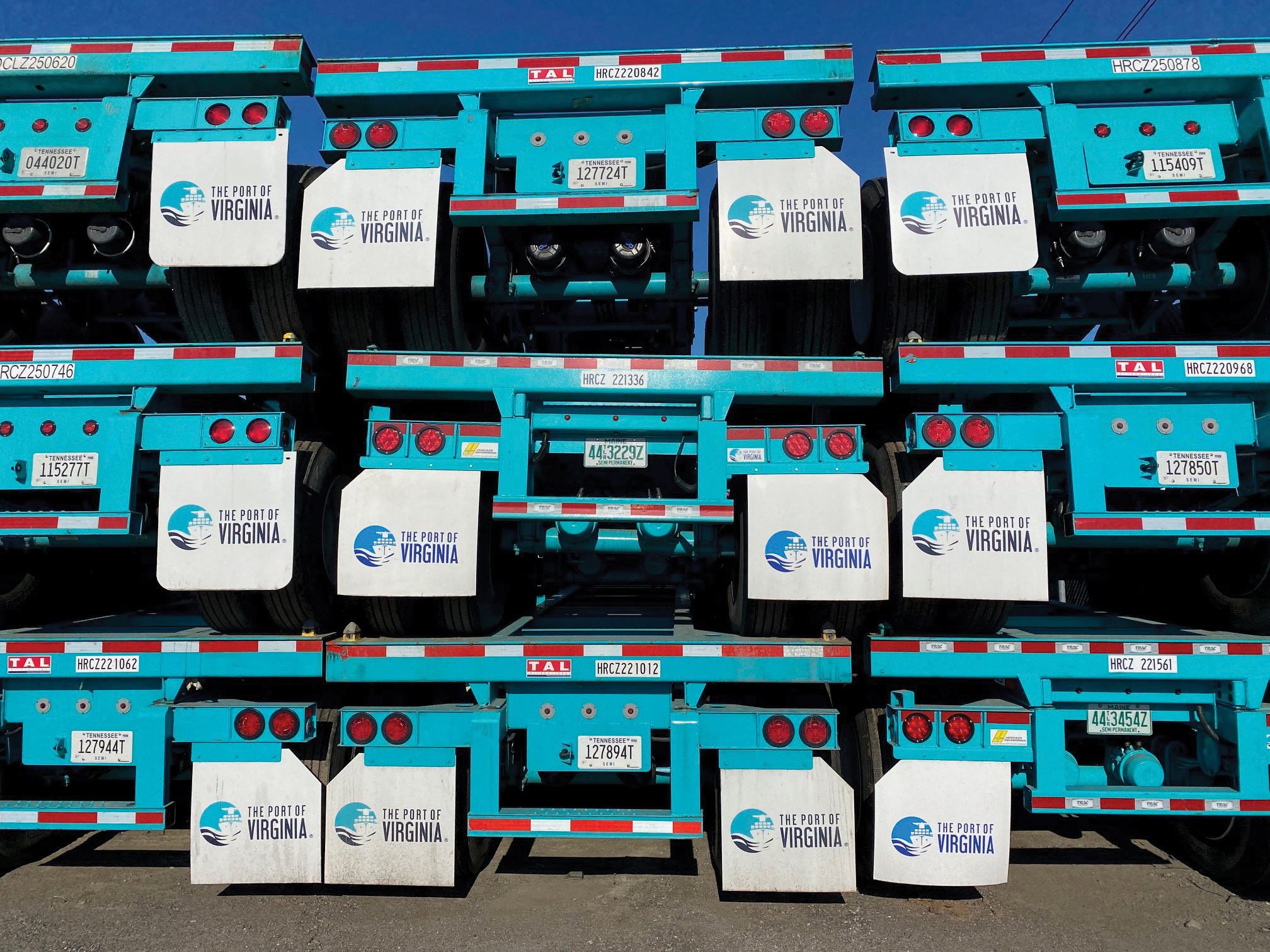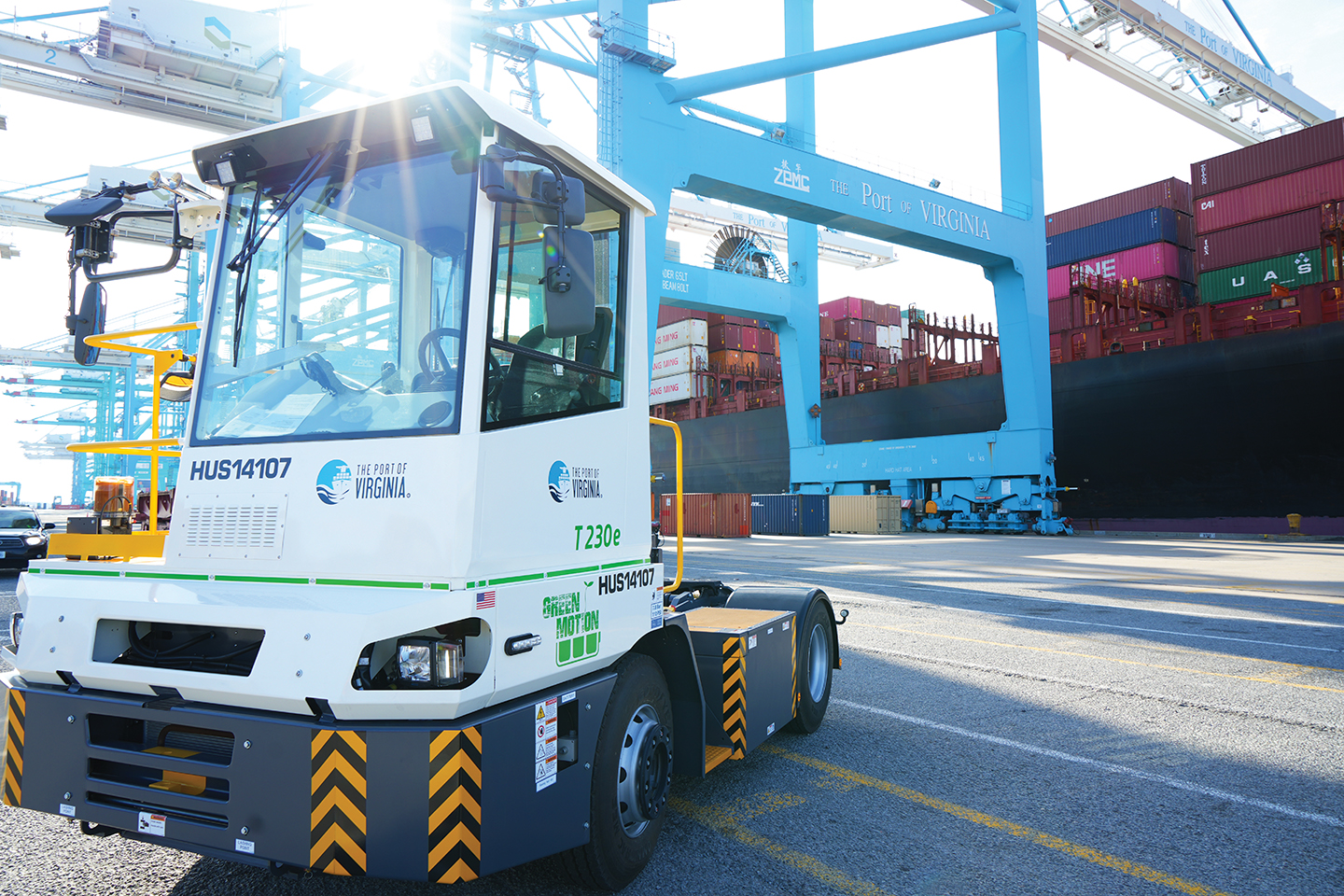
Stephen Edwards has served as the CEO and executive director of The Port of Virginia since 2021. VEDP Vice President of Logistics Eric Jehu spoke with Edwards about improvements at the port, how trade policy affects the port and its customers, and how the port serves as an economic engine for Virginia.
Eric Jehu: The Port of Virginia has been called “America’s Most Modern Gateway.” What is a gateway and what makes The Port of Virginia the most modern?
Stephen Edwards: A gateway is different from a port in the sense that, for Virginia, we will be the means by which people can move goods through the transportation chain, and not just a means to load and unload a ship. We’re determined that what we’ll be is exactly that: a gateway into and out of Virginia, the East Coast, and the Midwest. So we’re going to provide, hopefully, an advantage to people who wish to import and export through the Atlantic.
The tagline “America’s Most Modern Gateway” — our brand, really — reflects the fact that we believe we’re building, and in some cases have built, a really special gateway. That starts at the sea buoy when we talk about two-way channels for ultra-large ships, running through modern terminals, large cranes with great capability, using technology appropriately to move cargo, and then dealing with chassis fleets into trucking environments, providing truckers with service levels they can’t get in other ports. And integrating all that with a state that is investing in road infrastructure. When you come to the port, you get a differentiated service that will encourage you to do more business with us.
Jehu: Another thing that’s unique to your brand is the Virginia Model. Can you explain what that is and why it is so special?
Edwards: The Virginia Model is that the Virginia Port Authority is owned by the Commonwealth of Virginia, but we also operate our facilities. Being owner and operator of the port means we can really influence good outcomes for people who choose to use Virginia, and we can then encourage people to come here. If we think that through, it answers the questions, “Who operates the terminals? Who owns the terminals? Who invests in the terminals? Who deploys technology in the terminals?”
If we think back the last few years, we’ve had the pandemic and a surge of cargo that came in during the 2021–2022 period. We had the tragic disaster of the Key Bridge collapse in Baltimore. It was a big pivot for us to pick up and serve the Baltimore market for a period of time and required a really quick response. When service levels are under pressure for whatever reason, the Virginia Model means ensuring that Virginia can respond.
We’re a very agile organization, which means that people should not experience service issues here that they may experience elsewhere. If you’re a trucking company and you want a chassis, we’re going to have a chassis available in our fleet at all times. Like a utility would, you are going to plan for peaking or surges, and it ensures that the rest of our facilities are running very, very smoothly.

The Port of Virginia, Hampton Roads
Jehu: That’s a unique model relative to most other ports in the country, too, if I understand correctly.
Edwards: Very much so, but it’s proven itself time and time again. When one part of the gateway is required to perhaps take a financial margin reduction on behalf of the whole, we’re not arguing over which part of the sector takes the loss. We’re making sure that the whole sector thrives at all times so we can ensure good financial results. But at the same time, if there’s a little bit of pain to be taken on behalf of the whole, we’ll take the pain on behalf of the whole.
Jehu: What are some challenges the port is facing? How are you adapting to challenges taking place in the flow of goods, whether it’s geopolitical, climate, or otherwise?
Edwards: The biggest challenge at the moment is geopolitical. As the administration works through our trade policy as a nation, we’re seeing the flow of goods move not perhaps in line with the market, but in line with tariffs and changes to tariffs. Goods might be frontloaded to avoid a tariff, or they might be held back to let a tariff agreement be settled. So the normal peak season that a lot of us have grown accustomed to in our industry of back-to-school goods arriving, followed by goods for the holiday season, has changed. It changed during the pandemic with a surge of purchasing. It’s also changing now as people ask, “What is the tariff deadline to get goods into the country?” On the import side, you’re seeing peaks and valleys that are not normal.
As this continues and as the administration negotiates trade agreements, I’m sure we’ll see more of it. And that says to all in our industry, I think, that you must have the agility to move around those scenarios. As you make capital investment decisions that may require part of your capacity taken offline whilst you modernize, it may not be through the normal pattern. For all of us, it’s causing forecasting to be difficult. But at the same time, it just boils down to, “Be agile, be ready, and there will be good outcomes from it.”
Jehu: I think that ties directly into the concept of the port often as an economic engine. Certainly, the geopolitical environment makes attracting business investment challenging. We see surges and then pullbacks in projects, but there’s been a lot more of that recently. Could you quantify your response in broad categories of the wholesaler, distributor, or manufacturer, or a prospect that may not even be domiciled in Virginia but has taken advantage of the gateway?
Edwards: Let’s start with the manufacturer. I think the best example of manufacturing that can really work for a port, and where we add value, is where is somebody manufacturing for North American consumers domiciled so that we can serve them? If they’re importing components or raw materials and then adding value to those in their Virginia or North Carolina sites — wherever those sites may be — we can actually provide them a service level that enables those goods or commodities to come into their manufacturing location. That manufacturing company is going to need components from all over the world.
What you then need is a port that services the entire world, so we can’t be in a situation that we have one or two marine services. Whether someone wishes to source from the European Union, Asia, India, or Africa, we need to provide that sourcing capability so we truly add value to a manufacturer.
Let’s think about an exporter. The largest exports from our nation are agricultural, so how do we provide transload agricultural facilities in our gateway that can connect to that network of ships? How do we provide water depth that allows ships to leave or arrive full so we can get the lowest transport cost to or from our port? Our attraction of transload facilities to allow efficient movement of goods that could trade differently around the world on a dollar-per-ton basis allows us to provide some competitive cost advantage to those sectors.
In terms of attracting businesses, we want to ensure that we can bring as many port-centric businesses as possible. How do we get them to make investments and locate in Virginia? Through industrial developers, third-party logistics companies, and distributors. We need to do it across sectors, so we work with the communities.
If we look at some of the successes recently — industrial development in Suffolk or some of the new investments going into New Kent County, how do we make sure that industrial development is planned within those communities, that the roads are in place to and from the port, and that we can then attract cargo owners and third-party logistics companies to marry with those industrial developers?
Once we have that business running through our port, most go on to expand. So, having got their footprints here, they found our service levels good, that Virginia is a great state for doing business. We’ve got good connectivity up and down the East Coast to communities. We firmly believe that once we manage to get someone into our state, there’s normally a step two and a step three as they expand operations.



